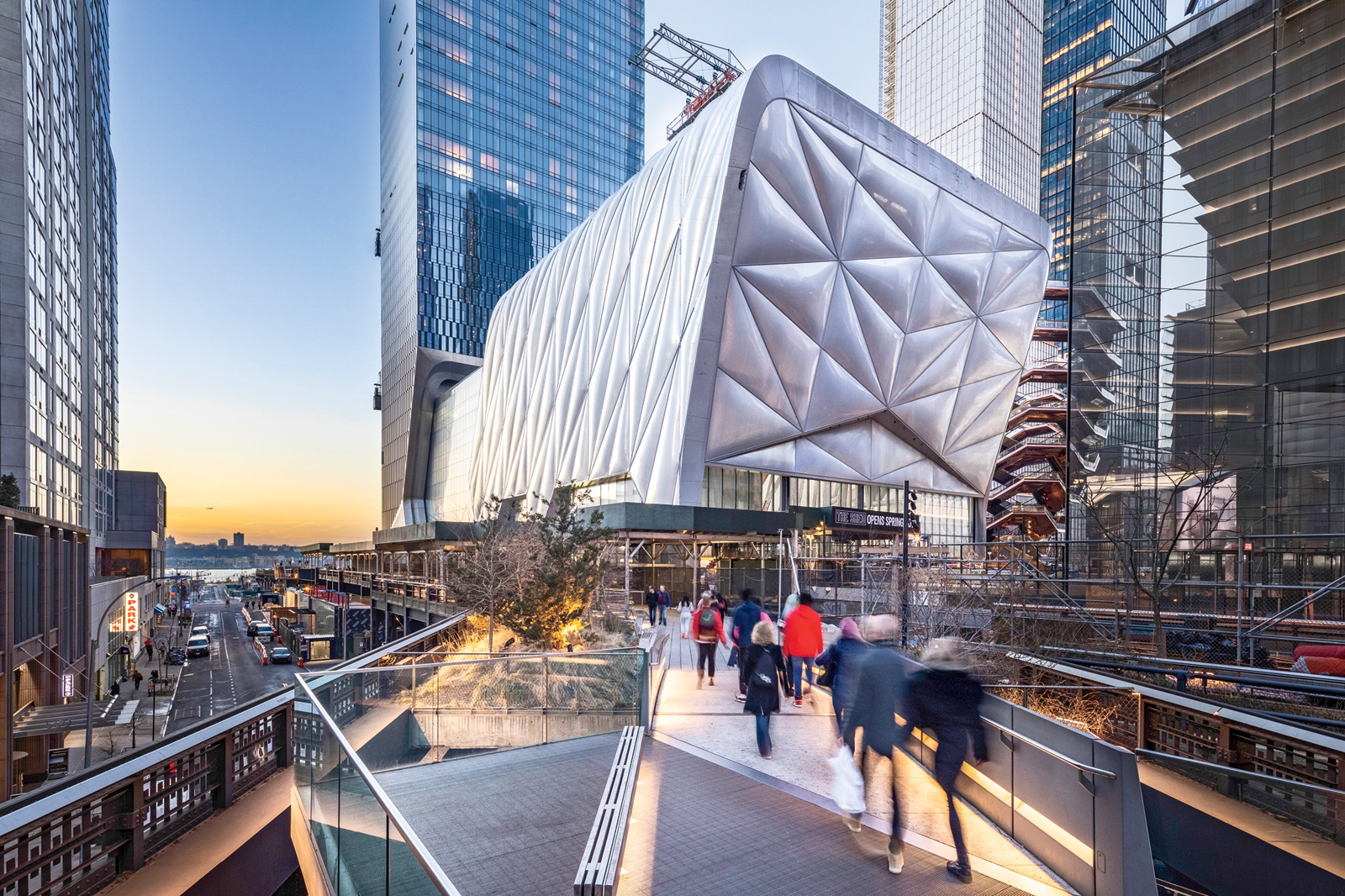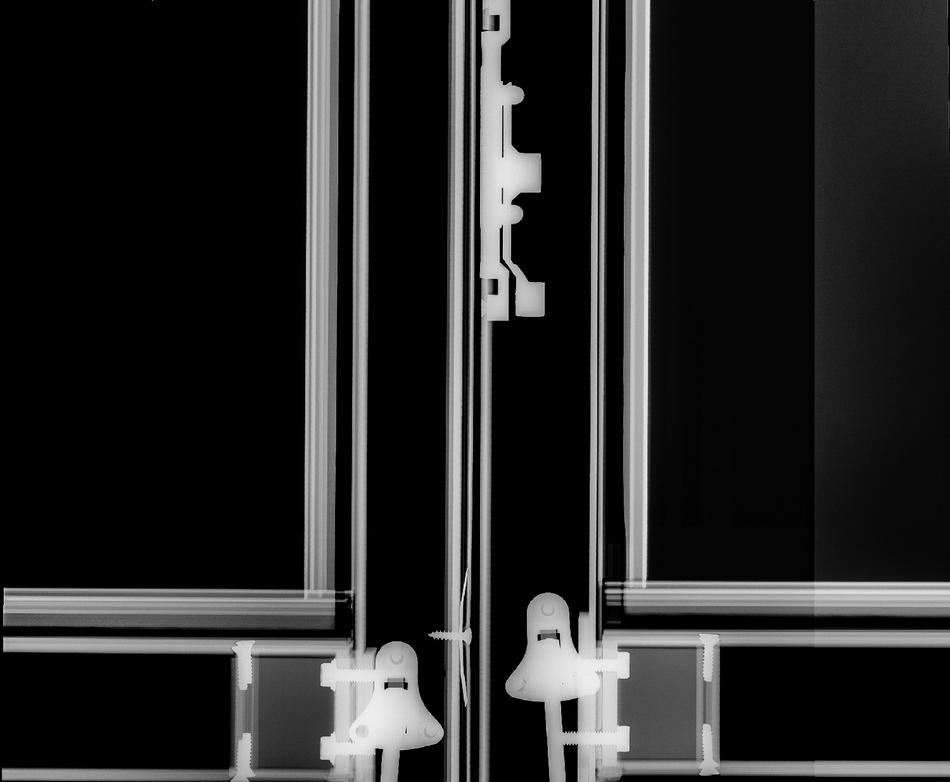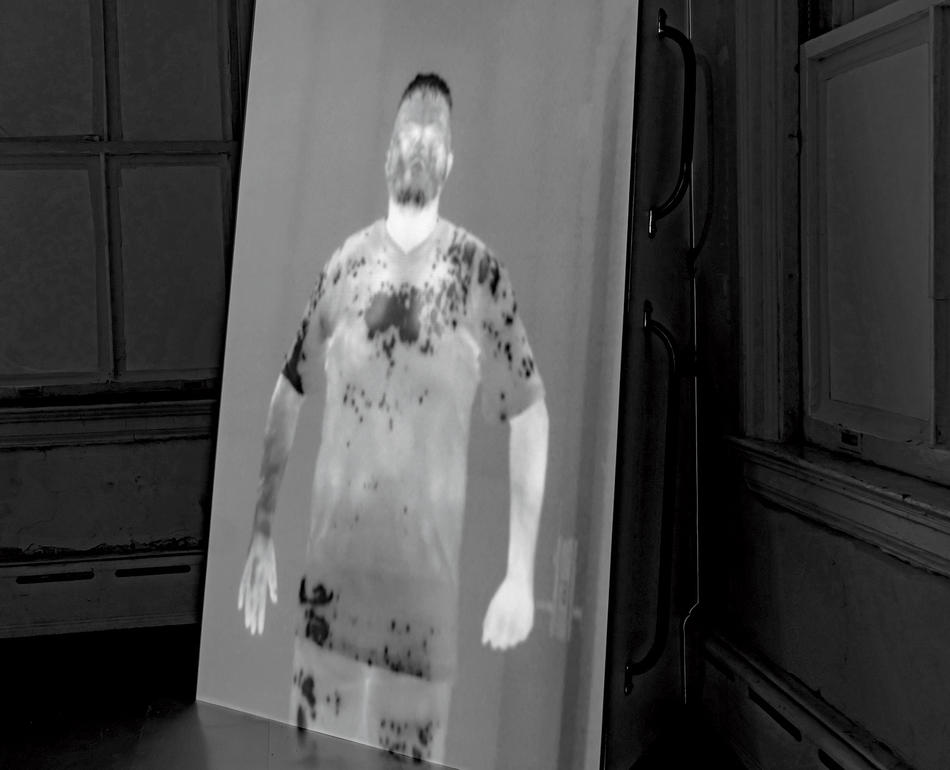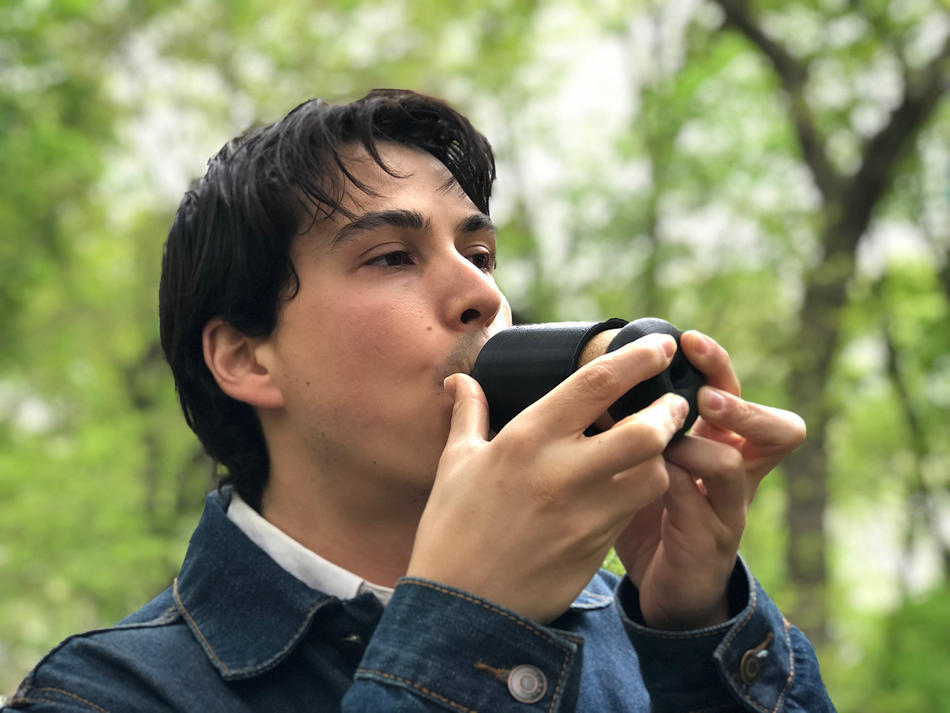
When the Shed — New York’s ambitious new cultural space — announced it was commissioning “trailblazing projects” by emerging artists, more than 900 hopefuls applied. Only 52 were chosen. Five were Columbians.
A meditation on the marginalized
For Kiyan Williams ’19SOA, performance art has always been about more than aesthetics. It’s a way to explore identity and “reclaim power in a society that devalues Black, queer bodies.”
Williams — who uses the pronoun “they” — says that growing up in Newark, they would dance to gain acceptance. “Being in front of a crowd — whether it was at a family barbecue or a queer nightclub — I felt freer than I did in other spaces,” they say.
As an undergraduate at Stanford University, where they pursued an independent course of study on art and identity, and as an MFA student at Columbia, Williams started using performance as a form of activism. In one piece, for example, they traveled through the gentrifying New York neighborhoods of Bushwick and Harlem wearing trash bags and cardboard boxes. In another, they emerged from a trash bag on a street corner and recited the story of two Black lesbians who were murdered and left in a dumpster.
“These kinds of pieces are meant to be uncomfortable and transgressive,” they say. “I want people to have to confront truths about how members of society are marginalized and discarded.”
Much of Williams’s work has involved dirt, and particularly the act of geophagy — consuming dirt — which was a common practice among slaves in the Caribbean and the American South. For their piece Dirt Eater, Williams sculpted the torture masks that were given to slaves as punishment for geophagy, using soil sourced from St. Croix, where the artist’s ancestors were slaves.
Williams will again incorporate dirt into their performance at the Shed. For that piece, Williams says, they will use their body and long braids to throw and smear soil onto a blank canvas, creating an outline of the map of America. After the performance, the canvas will be displayed in a group show at the Shed.
“Black people were brought to this country to work the soil. And when slavery ended, we were supposed to disappear,” they say. “This piece is a physical monument to the fact that we’re still here.”
Beyond the blueprint
Architectural historian Caitlin Blanchfield ’14GSAPP and architect Farzin Lotfi-Jam ’12GSAPP see the X-ray machine as much more than a piece of medical equipment. To them, it’s a means to photograph the structure of a building and chronicle the hidden details of its construction and preservation.
“We’re particularly interested in looking at how modernist buildings — and the historical narratives produced around them — have been conserved,” says Blanchfield. “Often nothing has changed about the façade, so the updates are basically hidden to the naked eye.”
While architects occasionally use X-rays for small conservation projects, Lotfi-Jam and Blanchfield are the first to use architectural X-rays in a creative context. After photographing a building, they use the X-ray images to create an architectural history, which they present both in galleries and academic journals. They see their work as similar to an archaeological dig — gathering evidence to understand a building’s historical and cultural significance, as well as the measures taken to maintain it.
For the first iteration of their project, called Modern Management Methods, Lotfi-Jam and Blanchfield photographed two UNESCO World Heritage–designated houses by Le Corbusier in Stuttgart, Germany, that had recently undergone a renovation. Now, for their commissioned work at the Shed, they’re tackling a much bigger, more iconic structure — the United Nations headquarters on Manhattan’s East Side.
The pair recently spent a weekend imaging everything from the General Assembly Chamber to the elevator shaft, largely focusing on changes made during a multibillion-dollar renovation that took place in 2014. “From the day that it opened in 1950, the UN headquarters has been symbolic, a physical representation of the idea of 'world peace,'” says Lotfi-Jam. “We’re in a very different time, politically and culturally, and we wanted to understand what it meant to transition this particular building into a new era.”
Lotfi-Jam and Blanchfield’s images of the UN will be on display at the Shed as part of a group show this summer, and they will simultaneously publish a book of their findings. And though they haven’t picked their next building yet, they say they plan to continue their project for the foreseeable future. “The exhibition at the Shed is really just one component of what we hope will be a much larger project,” says Lotfi-Jam.
Revisiting the raw power of nature
When Hugh Hayden ’18SOA graduated from Columbia last May with an MFA in sculpture, most of his classmates were focused on finding a job. But Hayden was going in the opposite direction. After working for more than a decade as an architect — including the entire time he was in the MFA program — Hayden was finally ready to give up his day job and focus on his art full-time.
“It always surprises people that I juggled both careers for so long. But working a full-time job made me disciplined about my time in the studio and also helped me develop more creative problem-solving skills,” he says. “When I run into a roadblock with a sculpture, I almost always go back to thinking like an architect.”
Hayden studied architecture at Cornell, where he focused on the hospitality industry. He spent several years at New York firms before landing at Starbucks, as a store designer. In his spare time, he started building furniture. “I’ve always been interested in the spaces where people eat,” he says. “So it felt natural for me to create the other elements of those spaces — the tables and chairs.” Eventually, creating furniture morphed into more experimental sculpture.
Hayden, who grew up on the edge of a protected forest near Dallas, was drawn to working with wood. Sourcing natural, uncut wood in New York City presented a challenge, but after a big storm in the fall of 2016, Hayden saw an opportunity.
“There were fallen trees all over my neighborhood, and I just took a hacksaw to one and started carving,” he says. “After that, I’d walk through Riverside Park on my way to my studio in Prentis Hall and scavenge for branches.”
Hayden built on the idea of inner-city foraging while developing his piece for the Shed. He plans to use discarded Christmas trees from Park Avenue to construct a miniature Cape Cod–style house. “It’s intended as commentary on class in American society,” he says. “Park Avenue is the pinnacle of wealth and status. And I think of the Cape Cod home as the archetype of the everyday, suburban American home. So I’m taking the trash from the upper crust to build the dreams of the middle class.”
The sculpture will be displayed in a mirrored gallery in the Shed, which will create the illusion of a room full of identical houses — a reference to the American suburban landscape. And as with much of Hayden’s work, the wood will not be cut smoothly — rather, branches will protrude from the walls in their natural form.
“Leaving branches whole allows the piece to blend back into the natural landscape,” he says. “I like the idea of camouflage, and of remembering that we’re all a part of a bigger natural organism.”
The shadowy implications of technology
Asif Mian ’18SOA refuses to limit his art to one medium. He paints, he sculpts, and he draws in pen and ink. He’s also a filmmaker, a performance artist, and a stop-motion animator. Often his work incorporates several media in one piece.
“To me they feel completely intertwined,” he says. “It’s hard for me to imagine any part of my work existing without the others.
Mian started making short films and music videos in his twenties while he was working as a graphic designer. He integrated his paintings and drawings into his sets and became interested in sculpture as a way to make props. While Mian says there’s no singular theme to his work, he is interested in the concepts of violence and technology and how they relate to each other in modern society.
“I’ve been interested in surveillance imagery since I was a teenager, in the technology that the military and the police use to target groups of people,” he says.
In his recent work, Mian has focused on images and video captured by a thermal camera — one that detects heat rather than light. For his installation at the Shed, he plans to build several sculptures made out of thin aluminum and polypropylene bags — two materials that conduct heat particularly efficiently. Thermal cameras will film visitors walking through the artwork and project those images onto screens on the walls of the gallery.
“It creates a very high-contrast, almost ghost-like image,” Mian says. “I’m exploring the ways that the camera erases human features and identity. It almost turns people into characters in a video game.”
In addition to his commission from the Shed, Mian will be showing similar work in a solo show at the artist-run Crush Curatorial gallery in New York this summer, and he will also be a part of a young curators’ exhibition at the Whitney Museum of American Art.
Ancient sounds on new instruments
Vicente Hansen Atria ’15CC, a drummer and composer, has worked in a variety of musical genres — classical, jazz, experimental, and rock (or, as he puts it, “rock-adjacent”). But recently, Hansen has expanded his repertoire significantly, to include both the traditional sounds of ancient instruments and the newly conceived music of instruments of his own invention.
For Hansen’s recent work, including his upcoming project at the Shed, he and his collaborator Mat Muntz used a 3D printer to fabricate original instruments and then composed for them. Modeled on historic musical instruments — such as the aulos, a wind instrument played in ancient Greece, and the mih, a type of bagpipe from Croatia — Hansen’s new creations both explore and expand their forbears’ unique sounds.
“The mih is a very special instrument: it has two chanters, or pipes, so that you can play two melodies simultaneously,” he says. “One of the instruments that we’re making riffs on that. It’s a modular instrument with ten separate pipes, and the player uses any combination of two of those pipes at a time.”
Hansen says that he was particularly interested in the tonality, or tuning system, of the aulos and the mih. Like those instruments, his new ones will be microtonal: they will use some notes that fall between the keys of a piano. “The system of notes that we commonly use in Western music is actually very recent; it didn’t exist until the late eighteenth century,” he says. “Before that, different kinds of music used distinct tunings, and there was quite a bit of experimentation.”
Hansen, who studied philosophy at Columbia College before moving on to a PhD program in music at Columbia, says that he had no prior experience with the technical demands of 3D printing. “I really had to plunge blindly into this world,” he says. “It’s taken a lot longer than I expected.”
For their project at the Shed, Hansen and Muntz are composing a piece that will incorporate their new instruments as well as existing double-reed instruments like the Scottish bagpipes and the Korean taepyeongso, a wind instrument akin to the oboe. They will perform it later this summer, with several professional musicians playing the new instruments and Hansen and Muntz accompanying them on drums and double bass.
“I’ve always been interested in exploring different approaches to sound — both ancient and modern, both inside and outside the Western canon,” he says. “And with the help of some cutting-edge technology, we’ve been able to bring them all together.”
See a full schedule of Columbia artists at the Shed.
This article appears in the Summer 2019 print issue of Columbia Magazine with the title "Shaping the Shed."







